Pet Ultrasound
Your pet deserves the best
When it comes to diagnosing and monitoring your pet’s health, a pet ultrasound is a safe, non-invasive, and highly effective tool. Whether your pet is showing unusual symptoms or undergoing routine health monitoring, our advanced ultrasound services offer invaluable insights.
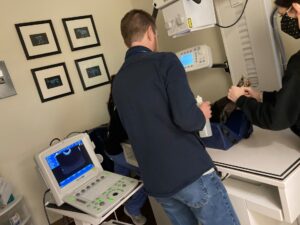
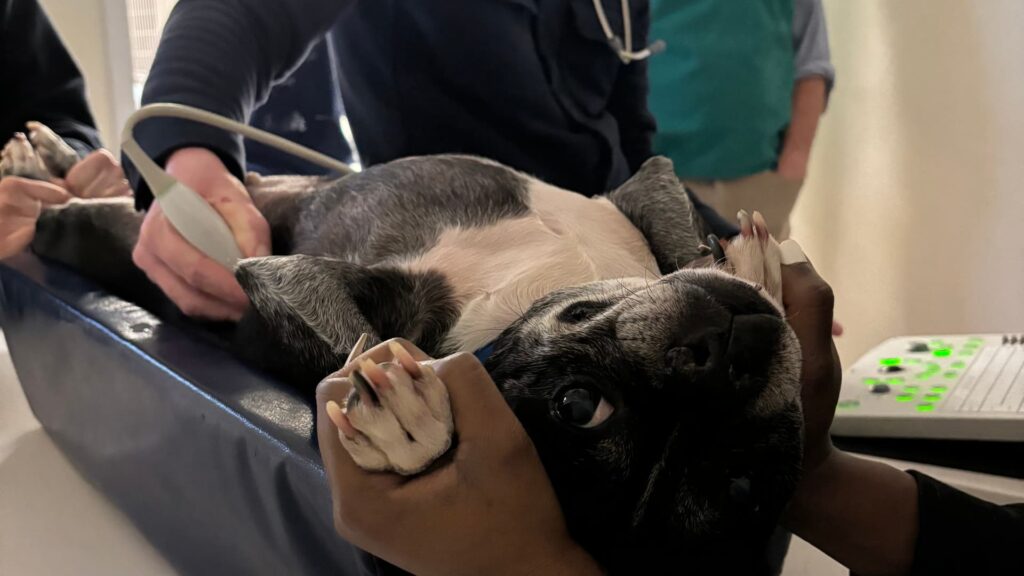
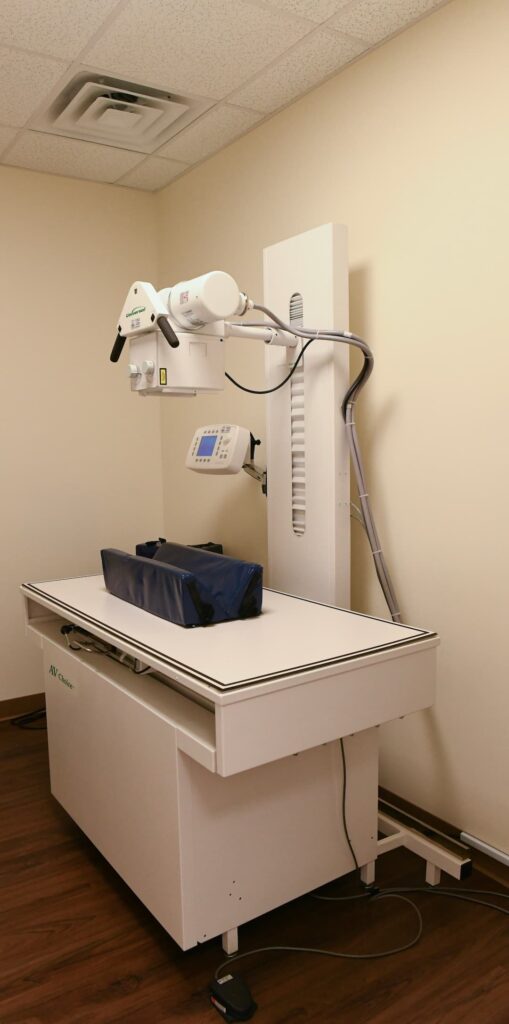
Safe and Non-Invasive Diagnostics
Painless ultrasound imaging evaluates soft tissues and organs without surgery or radiation exposure.
Real-Time Insights for Accurate Care
Live imaging reveals organ function, blood flow, and abnormalities for precise diagnoses.
Versatile and Essential for Pet Health
Detects tumors, monitors pregnancies, and guides treatments like biopsies and fluid drainage.
The Importance of Ultrasound in Veterinary Care
Pet ultrasound is an invaluable diagnostic tool that allows us to detect and monitor health issues early, often before symptoms become severe. This means faster, more effective treatment for your pet. Whether it’s confirming a diagnosis, monitoring a chronic condition, or providing peace of mind, ultrasound helps us deliver the best care possible.
Contact our hospital today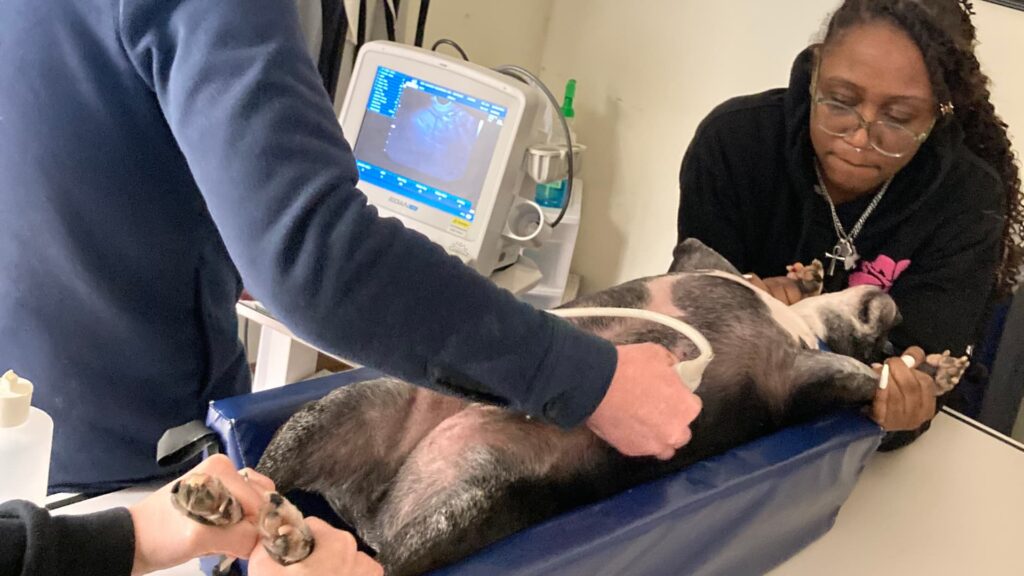
What is a pet ultrasound?
Pet ultrasound, also known as sonography, is a diagnostic imaging technique that uses sound waves to create detailed images of your pet’s internal organs and soft tissues. Unlike X-rays, which are ideal for viewing bones, ultrasound excels at capturing real-time images of soft tissues, making it an essential tool for diagnosing a wide range of health conditions.
Common uses of ultrasound include:
- Evaluating abdominal organs such as the liver, kidneys, spleen, and intestines.
- Detecting fluid accumulation or masses.
- Monitoring heart function through echocardiography.
- Guiding minimally invasive procedures like biopsies.
- Confirming and monitoring pregnancy.
Why Choose Ultrasound for Your Pet?
Ultrasound offers many benefits for diagnosing and managing your pet’s health:
- Non-Invasive and Painless: Ultrasound does not require surgery or radiation, making it safe and comfortable for your pet.
- Real-Time Imaging: Provides live views of internal organs, allowing us to observe movement, blood flow, and function in real time.
- Accurate Diagnoses: Helps identify conditions like tumors, blockages, fluid buildup, and organ abnormalities.
- Versatile Applications: From emergency diagnostics to routine check-ups, ultrasound is a highly adaptable tool for veterinary care.
When Does Your Pet Need an Ultrasound?
Your veterinarian may recommend a pet ultrasound for a variety of reasons, including:
- Unexplained Symptoms: Persistent vomiting, diarrhea, weight loss, or abdominal pain.
- Lumps or Masses: To evaluate the size, location, and nature of abnormal growths.
- Heart Concerns: To diagnose or monitor heart conditions using echocardiography.
- Fluid Build-Up: To locate and assess fluid in the abdomen or chest.
- Pregnancy Monitoring: To confirm pregnancy, count fetuses, and monitor their development.
Pet ultrasound is also valuable for monitoring chronic conditions or guiding treatments like fluid drainage or biopsies.
What to Expect During Your Pet’s Ultrasound
At Somerset Regional Animal Hospital, we prioritize your pet’s comfort throughout the ultrasound process.
Here’s what you can expect:
- Preparation: A pet ultrasound requires your pet to lie still for a short time. In some cases, a small area may be shaved to ensure clear imaging. Sedation is rarely needed but may be used for particularly anxious pets.
- Procedure: Our trained veterinary team will apply a gel to your pet’s skin and use a handheld probe to capture images. The process is painless and usually takes 20–40 minutes.
- Review and Discussion: After the procedure, your veterinarian will review the images and discuss the findings with you.
Our goal is to make the experience as easy and stress-free as possible for both you and your pet.
Early detection and better outcomes using advanced sonography
Schedule an imaging todayQuick painless insights for your pet’s health
Your pet’s health and happiness are our top priorities. If your pet is experiencing symptoms or requires routine health monitoring, our expert team is here to help with advanced ultrasound technology.
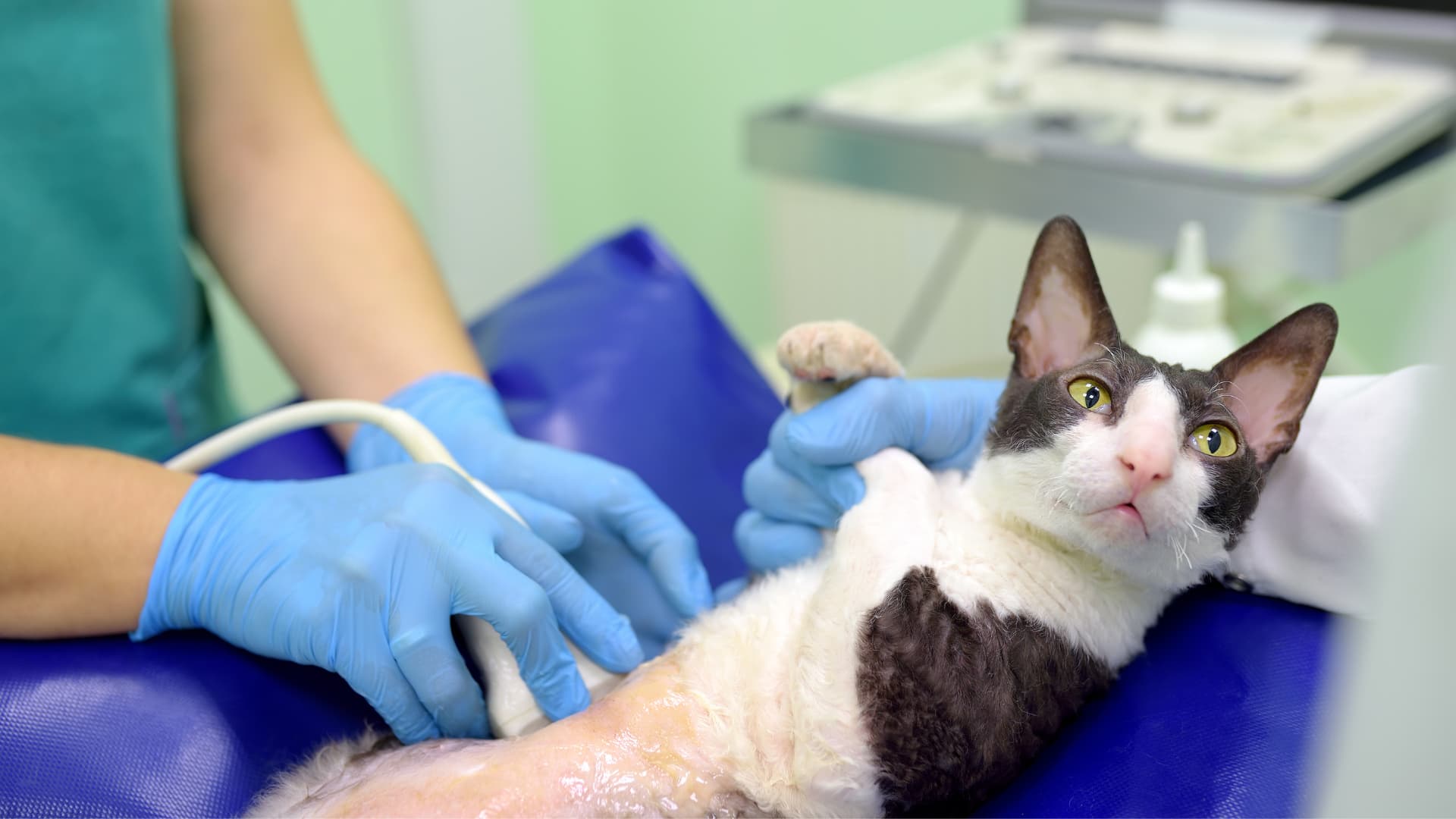
Pet Ultrasound questions answered
Is ultrasound safe for my pet?
Does my pet need to be sedated?
How long does a pet ultrasound take?
What conditions can ultrasound detect?
